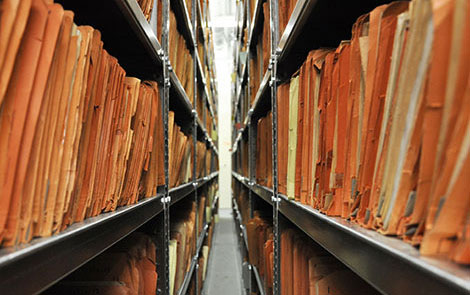Tasks of the Stasi Records Archive
Tasks
In addition to the safekeeping and securing of archival holdings, one of the Stasi Records Archive’s most important tasks is to provide people access to files that concern them. They can then clarify what influence the Stasi had on their destiny (Paragraph 1 of the StUG).
Download the Stasi Records Act in English (PDF, 1.12 MB, Datei ist barrierefrei ⁄ barrierearm).
The Stasi records are also made available to scholars and journalists who want to engage in a historical and political reappraisal of the GDR dictatorship.
In response to petitions from public and private agencies, the agency provides information from the files about individuals in public service or in prominent social positions. The notification will include any evidence that exists in the files to suggest that collaboration with the MfS took place in the past. The requesting agency is responsible for determining what consequences this information should have. The agency also provides information for the purpose of rehabilitation, compensation, criminal persecution, danger prevention and pension concerns.
Stasi Records Act also specifies that the agency is responsible for providing the public with information about the structure and methods of the Stasi and how it operated. This is done through research, exhibitions, events and educational programs for schools.
How many requests have been recieved?
Applications from 1991 to end 2021
- Requests and petitions: 7.35 million
- Requests from citizens to view and receive records: 3.34 million
- Requests from journalists and scholars: 38,430
- Petitions for the examination of public service employees and pension concerns: 3.44 million
- Petitions regarding rehabilitation, compensation, criminal investigation: 517,419



